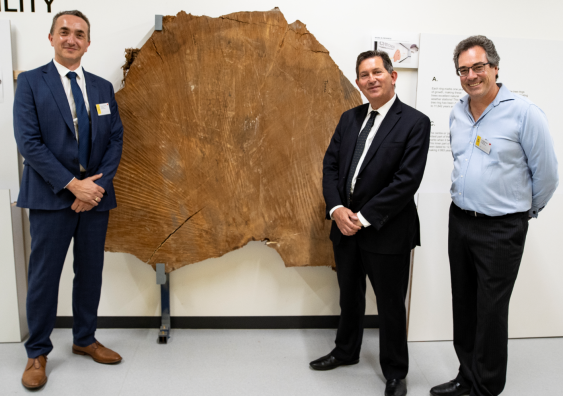In a bid to track the planet’s changing climate, UNSW has recently opened an $8m radiocarbon dating lab, where researchers will have exclusive access to an archive of Antarctic ice, subfossil and living trees from remote New Zealand Subantarctic Islands and other ancient carbon resources.
Data generated from the archive will allow researchers to fill a vast 50,000-year gap in the planet’s climate records, highlighting the impacts of abrupt and extreme climate change.
The data will complement existing detailed climate records which only date back some 150 years, allowing Australia to better understand its environmental history.
The $8 million Chronos 14 Carbon-Cycle Facility has been developed in partnership with Australian National University and the Australian Nuclear Science and Technology Organisation (ANSTO) and features the Southern Hemisphere’s first Mini Carbon Dating System (MICADAS) Accelerator Mass Spectrometer (AMS).

This $8m facility features the Southern Hemisphere's first MICADAS AMS.
UNSW is partnering with ANSTO to train a new generation of interdisciplinary researchers who will be equipped to meet the environmental challenges of the future.
ARC Laureate Fellow and Professor of Earth Science and Climate Change, Chris Turney said the new facility will facilitate carbon dating research at UNSW to help explain changes in our climate today.
“The insights afforded by this new facility will provide an improved understanding of the global drivers and impacts of future climate whilst also allowing us to investigate the adverse impact of past global events on life on earth, including major changes in the carbon cycle,” Professor Turney said.
“It will also increase our knowledge of prehistoric human populations across Australia and Asia,” he said.
The installation of this Chronos 14 Carbon-Cycle Facility highlights the University’s commitment to significantly invest in world-class research and teaching facilities to deliver on its Strategy 2025 to position itself as Australia’s global university.
PhD students, postdoctoral research staff and academics from across UNSW, particularly in the School of Biological, Earth and Environmental Science in the Schools of Science, Civil Engineering and Engineering will be able to utilise this world-class facility.



